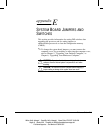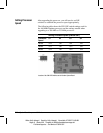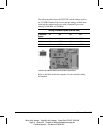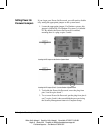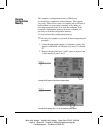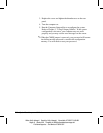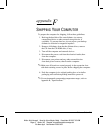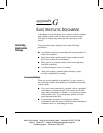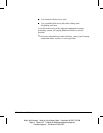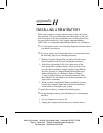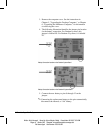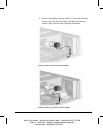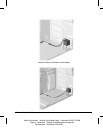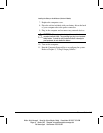
Reference Guide
G-1
Writer: Holly Jahangiri Saved by: Alyce Klingler-Castle Saved date: 06/10/97 3:54 PM
Pages: 2 Words: 252 Template: d:\95office\templates\commapp.dot
File Name Appg.doc Part Number 278019-002
appendix
G
E
LECTROSTATIC
D
ISCHARGE
A discharge of static electricity from a finger or other conductor
may damage system boards or other static-sensitive devices.
This type of damage may reduce the life expectancy of the
device.
Preventing
Electrostatic
Damage
To prevent electrostatic damage, observe the following
precautions:
■
Avoid hand contact by transporting and storing products in
static-safe containers.
■
Keep electrostatic-sensitive parts in their containers until
they arrive at static-free workstations.
■
Place parts on a grounded surface before removing them
from their containers.
■
Avoid touching pins, leads, or circuitry.
■
Always be properly grounded when touching a static-
sensitive component or assembly.
Grounding Methods
There are several methods for grounding. Use one or more of
the following methods when handling or installing electrostatic-
sensitive parts:
■
Use a wrist strap connected by a ground cord to a grounded
workstation or computer chassis. Wrist straps are flexible
straps with a minimum of 1 Mohm +/- 10 percent resistance
in the ground cords. To provide proper ground, wear the
strap snug against the skin.
■
Use heelstraps, toestraps, or bootstraps at standing
workstations. Wear the straps on both feet when standing on
conductive floors or dissipating floor mats.



